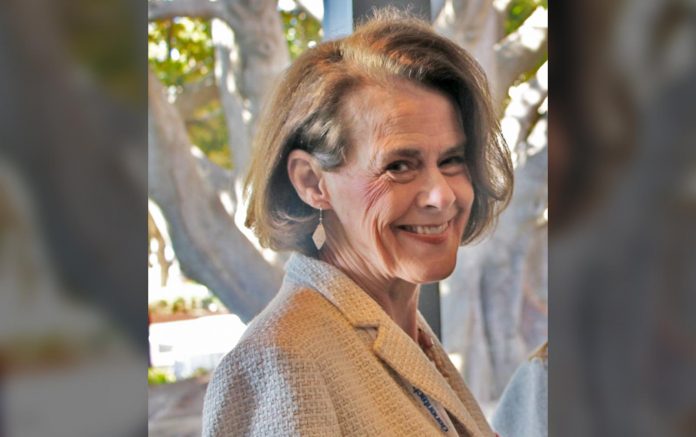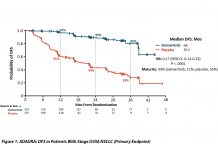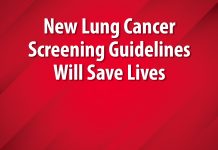By Joan H. Schiller, MD
Posted: August 13, 2020
The COVID-19 pandemic burst upon the world stage with startling force at the beginning of this year. The issues of climate change and global warming have been around somewhat longer—decades, in fact—but are only coming slowly to the public’s attention. What do these two events have to do with each other? And more importantly, for our purposes here, what do they have to do with our patients with lung cancer?
Climate Change and Greenhouse Gasses
It is incontrovertible that climate changes occurring and causing global warming. Temperatures in the United States have already risen more than 2° Fahrenheit (F) over the past century, largely because of climate change, and are expected to keep rising throughout the next few decades and likely much longer. Ninety-seven percent or more of climate scientists say that human-caused climate change is happening, and all major scientific academies from around the world and most prestigious associations agree.1 Even the public agrees; two recent polls conducted by CBS News and The Washington Post with the Kaiser Family Foundation found that approximately 90% of Americans believe the earth is experiencing climate change in some way, and approximately 70% believe human activity contributes “a lot” or “some” to climate change.2 Additionally, 40% to 60% agreed that climate change is a “serious problem/crisis.”
It is also undisputable that greenhouse gasses produced by humans, such as carbon dioxide, nitrous oxide, and methane are major contributors to climate change and global warming. Greenhouse gasses prevent some of the ultraviolet light from the sun from being reflected back into outer space, and instead redirect it back to the earth with attendant warming. Carbon dioxide is of greatest concern because it has a long atmospheric lifetime (hundreds to thousands of years). The amount of warming we will see later this century depends heavily on the amount of heat-trapping gases we emit today. If the world’s emissions rise at the current pace, parts of the United States are projected likely increase of 3oF to 5.5°F for the 2 decades centered around 2050, and another 7°F to 11°F (3.9° Celsius [C] to 6.1°C) by the end of the century.3,4 But how does this affect patients with lung cancer?
It is hypothesized that with global warming, the Earth is likely to see more pandemics. Diseases most likely to increase in their distribution and severity usually have three (agent, vector, and human being) or four (plus vertebrate reservoir host) factors involved.5 The three- and four-factor complexes by definition include the vector-borne diseases and zoonoses. These diseases are usually limited in their distribution, either by the range of their vector, or by that of a reservoir vertebrate host. The vector and host in turn are limited in range directly or indirectly by temperature and rainfall. If that range changes—because warming temperatures influence changes in vegetation, for example—people could become exposed to novel vector-borne diseases. COVID-19, for example, is hypothesized to have jumped from bats to humans, perhaps via another animal such as a pangolin, at a wet market in Wuhan, China.
Climate change resulting in global warming is bad for patients with lung cancer for other reasons as well. Climate change causes extreme weather changes, such as extreme heat waves, droughts, and flooding; dwindling snow packs; and changes in the temperature of the ocean, resulting in damage to the marine food chain and a rise in sea level. Disruption and destruction of food and clean water will result in hunger, malnutrition, and mass population migration. In fact, in 2015, the U.S. Department of Defense stated, “Climate change is an urgent and growing threat to our national security, contributing to increased natural disasters, refugee flows and conflicts over basic resources such as food and water. These impacts are already occurring, and the scope, scale, and intensity of these impacts are projected to increase over time.”6
Air Pollution
It is also irrefutable that the production and combustion of fossil fuels results in a major pollutant called particulate matter (PM), in addition to greenhouse gas emissions. PM comes in two sizes (coarse and fine) and is a major pollutant affected by climate change. Fine particles (concentrations of particle mass with aerodynamic diameter less than 2.5 mum; PM2.5) come from burning fossil fuels in factories, power plants, and diesel- and gasoline-powered motor vehicles. Acute exposure can cause a decrease in lung function, resulting in respiratory and cardiovascular diseases and cardiopulmonary and lung cancer deaths. The 2015 Global Burden of Disease study lists air pollution as the fourth-highest–ranking global mortality risk factor.7 Global deaths attributable to ambient PM2.5 increased from 3.5 million (95% CI: 3.0 million to 4.0 million) in 1990 to 4.2 million (3.7 million to 4.8 million) in 2015.
Ground-level ozone (or tropospheric ozone) is formed when hydrocarbons and nitrogen oxide react in the presence of sunlight and heat. More frequent hot days results in more ground-level ozone. Ozone pollution in urban areas is especially concerning with increasing temperatures. During heat waves in urban areas, ground-level ozone pollution can be 20% higher than usual.8 Ground-level ozone exacerbates asthma, chronic obstructive pulmonary disease (COPD), and other respiratory conditions. The above point is exacerbated because our use of fossil fuels causes climate change and generates air pollution, causing a feedback loop. It is estimated that in 2017, exposure to ozone caused an additional 254,000 (95% CI [97,000, 422,000]) deaths.9
It is well established that air pollution increases the risk COPD and of premature mortality in the general populations,10 and that COPD is a risk factor for lung cancer. Patients with COPD who have never smoked are more likely to get lung cancer when compared to never-smokers without COPD (HR 2.67, 95% CI [2.09, 3.40]).11 In addition, recent epidemiological studies have also shown that exposure to air pollution increases the incidence and mortality from lung cancer, with lung cancer risk associated with PM2.5 exposure being greatest for former smokers (HR 1.44; 95% CI [1.04, 2.01]), followed by never-smokers (HR 1.18; 95% CI [1.00, 1.39]), and then current smokers (HR 1.06; 95% CI [0.97, 1.15]).12 Air pollution exposures after the diagnosis of lung cancer shortens survival. For example, median survival for patients with early-stage lung cancer at diagnosis was 2.4 years for those with high PM2.5 exposure (≥ 16 μg/m3) and 5.7 years for those with low PM 2.5 exposure (< 10 μg/m3).13
COVID-19
Changes in the environment increase the risk for COVID-19 complications, according to retrospective studies which do not always present outcomes based on cancer stage, therapy, or underlying conditions. For example, after collecting data from approximately 3,000 counties in the United States and adjusting for population size, weather, and socioeconomic factors such as obesity and smoking, one study found that even a small increase in long-term exposure to PM2.5 (1 mcg/m3) is associated with a 15% increase in the COVID-19 death rate, (95% CI [5%, 25%]).14
Patients with cancer in general are at an increased risk for COVID-19 complications, including hospitalization and death. In a case study of 218 patients with cancer who were COVID-19 positive in New York City, a total of 61 (28%) of these patients died from COVID-19, compared to 149 out of 1,090 (14%) patients who did not have cancer (OR 2.45; p < 0.001). A total of 37% (20/54) of patients with hematologic malignancies and 25% (41/164) of patients with solid malignancies died.15 A study from Wuhan, China, where the outbreak started, revealed that the infection rate for patients with cancer was nearly double that of those without cancer, and 58.3% of the patients with cancer had lung cancer.16
Patients with lung cancer are at an even higher risk of dying from severe COVID-19 complications, given that they have two high-risk features for contracting the disease: cancer and underlying chronic lung disease. In the New York study, 6 of 11 patients with lung cancer died from COVID-19.15 Another study reported that people with lung cancer are nearly three times as likely to die of COVID-19 as people without cancer, according to a multicenter study from Wuhan, China.17
Early results of the TERAVOLT (Thoracic cancERs international coVid19 cOLlaboraTion) global registry study, presented this year at the annual meetings of the American Association for Cancer Research Virtual and the American Society of Clinical Oncology, revealed that of the first 200 patients with COVID-19 and thoracic cancers, 152 (76.0%) patients were hospitalized and 66 (33.3%) died. (Garassino et al., 2020) The type of lung cancer and cancer therapy did not affect survival.18
Climate Change, COVID-19, and Lung Cancer
Thus, we have three major world events affecting our patients with cancer—climate change with attendant global warming, air pollution, and the COVID-19 pandemic. These are all integrally related. Use of fossil fuels contributes to climate change and air pollution and affects our most vulnerable population, including patients with lung cancer. Climate change causes global warming, which in turn has effects on health, pandemics, sea levels, and extreme weather events. COVID-19 is a sign of the many pandemics predicted to come because of global warming. And all of these—climate change, global warming, air pollution, and COVID-19—will impact access to health care, disrupt supply chains, and affect our patients with lung cancer for decades to come.
However, we can change some of this. PMs and ozone have been reduced over the last 2 decades due to the Clean Air Act of 1990, although recent loosening of these regulations has led to an uptick. In this time of the COVID-19 pandemic, “stay at home” orders in place all over the world have led to a massive shutdown of economic activity and a drastic reduction in the use of fossil fuels. In a 1-month period of time, this has led to an approximate 40% reduction in average level of nitrogen dioxide pollution and a 10% reduction in average level of PM pollution, resulting in 11,000 avoided deaths from air pollution (95% CI [7,000, 21,000]).19 In China, measures to contain the virus in February alone caused a drop in carbon emissions of an estimated 25%. Images showing the differences in the skyline in cities such as New York City, Los Angeles, and New Delhi before and during the pandemic, due to a reduction in air pollution, are startling. If we can limit the global mean warming to 2°C by mitigation efforts, we could avoid between 70 and 1,980 annual heat-related deaths per city during extreme events in the United States.20
As the United Nations’ secretary general recently noted,21 the threat from COVID-19 is temporary. The threat from climate change, more pandemics, heat waves, floods, and extreme storms resulting in the loss of human life will remain with us for decades. On behalf of our patients, our families, and future generations to come, we have a moral obligation to speak out and take action.
About the Author: Dr. Schiller is an adjunct professor at the University of Virginia and a Board Member of the Lung Cancer Research Foundation
References:
1. Molina M, McCarthy J, Wall D, et al. The Reality, Risks, and Response to Climate Change. What We Know. Accessed May 9, 2020. https://whatweknow.aaas.org/get-the-facts.
2. Johnson S. 75% of Americans now believe humans fuel climate change. Big Think. Published September 16, 2019. Acccessed May 9, 2020. https://bigthink.com/politics-current-affairs/climate-change-poll-americans?rebelltitem=1#rebelltitem1.
3. Karl T, Melillo J, Peterson T. Global climate change impacts in the United States: A state of knowledge report from the U.S. Global Change Research Program: 2009 Report. Accessed May 9, 2020. https://nca2009.globalchange.gov.
4. Climate Change and Your Health: Rising Temperatures, Worsening Ozone Pollution. Union of Concerned Scientists. Published August 2, 2011. Updated August 24, 2011. Accessed May 9, 2020 ucsusa.org/climateandozonepollution.
5. Shope R. Global Climate Change and Infectious Diseases. Environ Health Perspect. 1991;96:171-174.
6. National Security Implications Of Climate-Related Risks And A Changing Climate. Department of Defense. Published July 23, 2015. Accessed May 9, 2020. Archive.defense.gov/pubs/150724-congressional-report-on-national-implications-of-climate-change.pdf.
7. GBD 2015 Risk Factors Collaborators. Global, regional, and national comparative risk assessment of 79 behavioural, environmental and occupational, and metabolic risks or clusters of risks, 1990-2015: a systematic analysis for the Global Burden of Disease Study 2015. 2016;388(10053):1659-1724.
8. Hou P and Wu S. Long-term Changes in Extreme Air Pollution Meteorology and the Implications for Air Quality. Sci Rep. 2016;6,23792.
9. Cohen AJ, Brauer M, Burnett R, et al. Estimates and 25-year trends of the global burden of disease attributable to ambient air pollution: an analysis of data from the Global Burden of Diseases Study. Lancet, 2017;389(10082):1907-1918.
10. Schikowski T, Sugiri D, Ranf U, et al. Long-term air pollution exposure and living close to busy roads are associated with COPD in women. Respir Res. 2005;6(1):152.
11. Park HY, Kang D, Shin SH, et al. Chronic obstructive pulmonary disease and lung cancer incidence in never smokers: a cohort study. Thorax. 2020 Apr 2. [Epub ahead of print].
12. Hamra GB, Guha N, Cohen A, et al. Outdoor particulate matter exposure and lung cancer: a systematic review and meta-analysis. Environ Health Perspect. 2014;122(9):906-911.
13. Eckel SP, Cockburn M, Shu YH, et al. Air pollution affects lung cancer survival. 2016;71(10):891-898.
14. Wu X. Exposure to air pollution and COVID-19 mortality in the United States. 2020. In press.
15. Mehta V, Goel S, Kabarriti R, et al. Case Fatality Rate of Cancer Patients with COVID-19 in a New York Hospital System. Cancer Discov. 2020 May 1. [Epub ahead of print].
16. Yu J, Ouyang W, Chua MLK, Xie C. SARS-CoV-2 Transmission in Patients With Cancer at a Tertiary Care Hospital in Wuhan, China. JAMA Oncol. 2020 Mar 25. [Epub ahead of print].
17. Dai M, Liu D, Liu M, et al. Patients with cancer appear more vulnerable to SARS-COV-2: a multi-center study during the COVID-19 outbreak. Cancer Discov. 2020 Apr 28. [Epub ahead of print].
18. Garassino MC, Whisenant JG, Huang LC, et al. COVID-19 in patients with thoracic malignancies (TERAVOLT): first results of an international, registry-based, cohort study. Lancet Oncol. 2020;21(7):914-922.
19. Myllyvirta L and Thieriot H. 11,000 air pollution-related deaths avoided in Europe as coal, oil consumption plummet. Centre for Research on Energy and Clean Air. Published April 30, 2020. Accessed May 10, 2020. https://energyandcleanair.org/air-pollution-deaths-avoided-in-europe-as-coal-oil-plummet.
20. Lo YTE, Mitchell DM, Gasparrini A, et al. Increasing mitigation ambition to meet the Paris Agreement’s temperature goal avoids substantial heat-related mortality in U.S. cities. Sci Adv. 2019;5(6):eaau4373.
21. Crist M. What the Coronavirus Means for Climate Change. New York Times. Published March 27, 2020. Accessed May 10, 2020. https://www.nytimes.com/2020/03/27/opinion/sunday/coronavirus-climate-change.html.
Resources
- Medical Society Consortium on Climate and Health
- Center for Climate Change & Health
- Global Consortium on Climate and Health Education
- American College of Physicians Climate Change Toolkit
- World Health Organization: Climate Change and Human Health
- Global Climate & Health Alliance
- Health Care Without Harm









